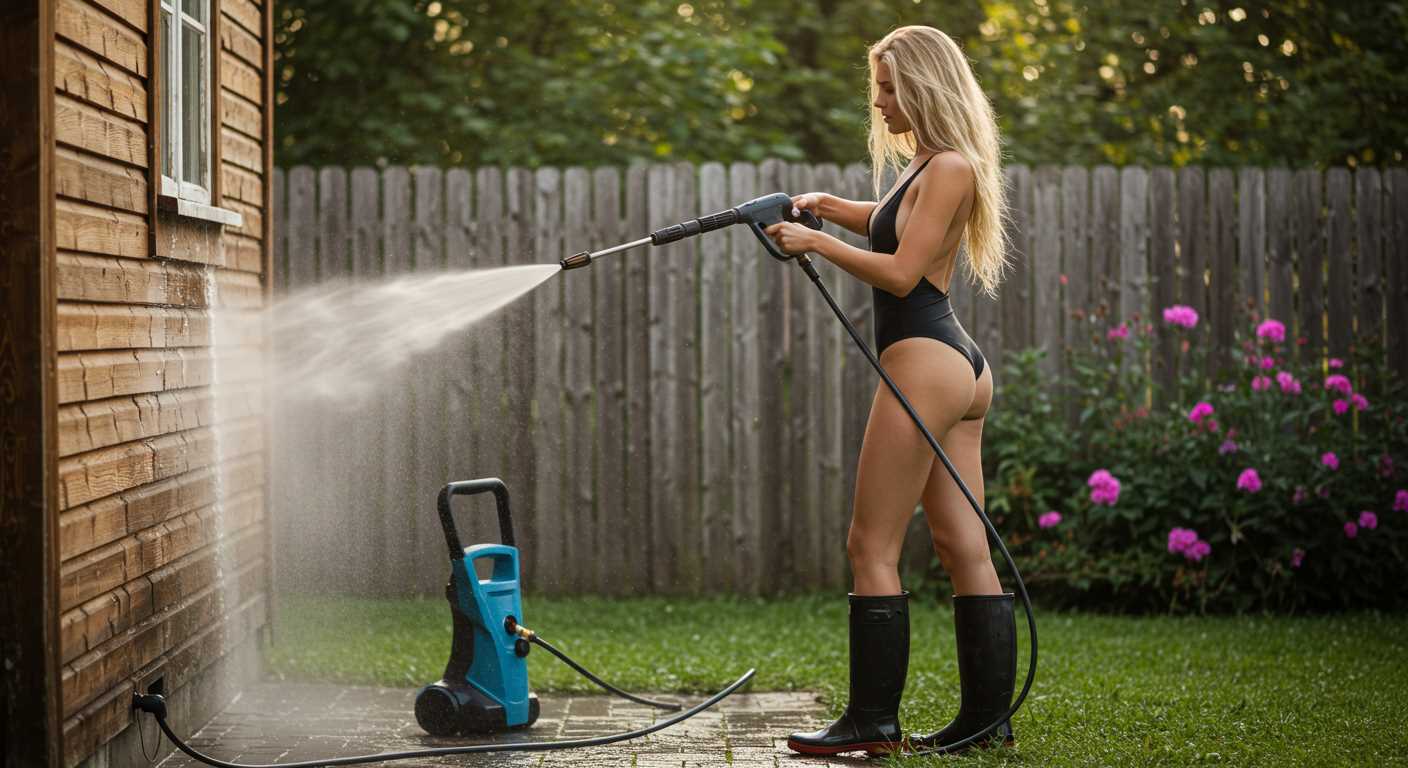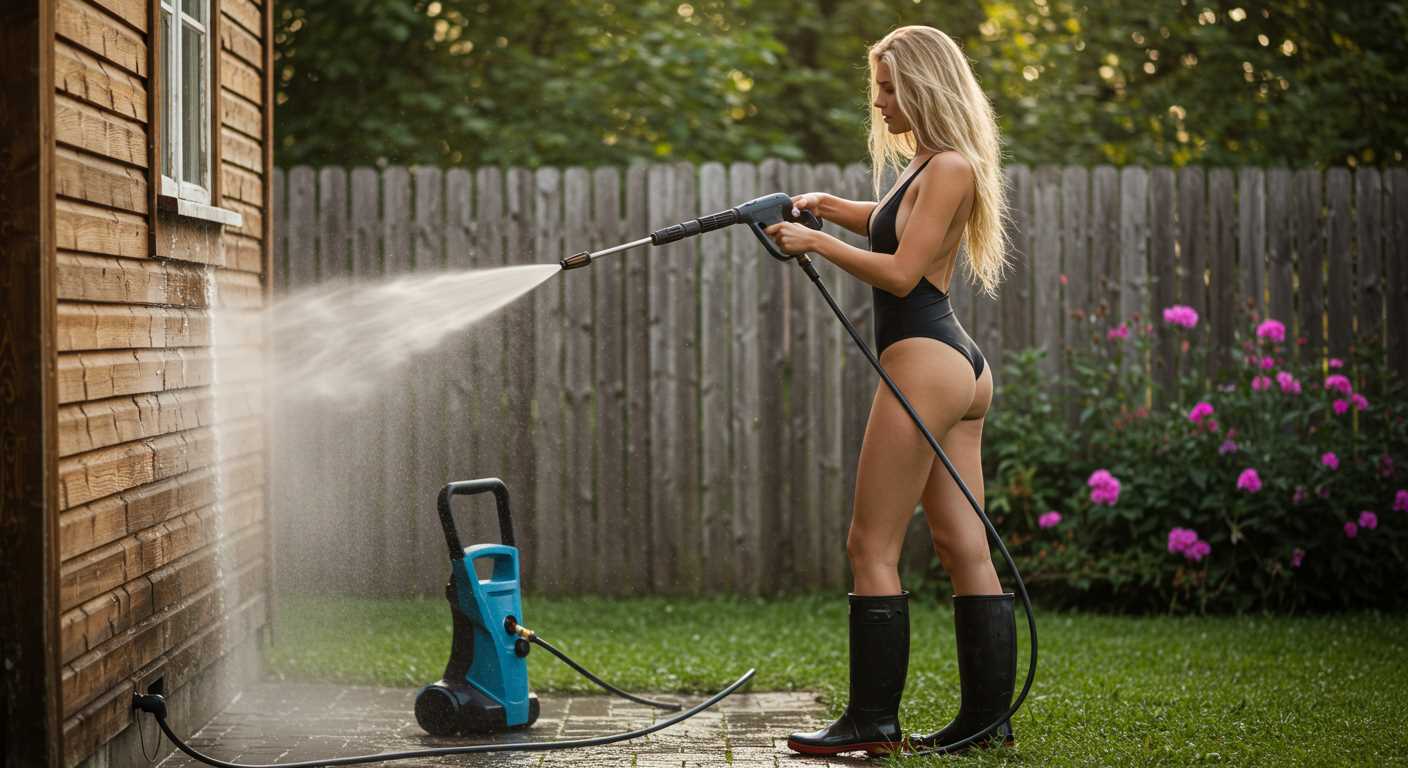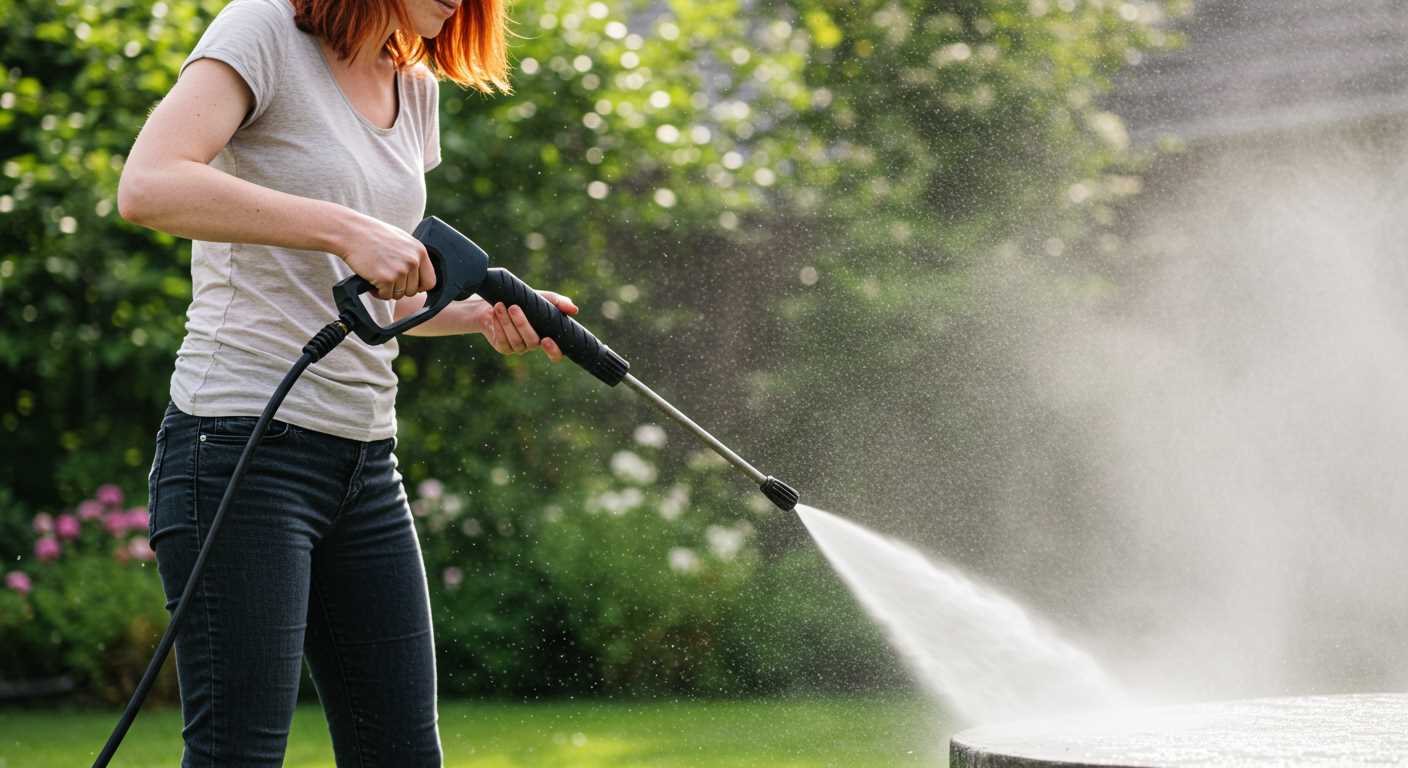




When it comes to enhancing the cleaning power of your pressure washer, the right sand can make all the difference. In this article, I will delve into the best types of sand for use in pressure washer sandblasters, exploring their properties, advantages, and suitability for various tasks. Whether you’re a DIY enthusiast or a professional, selecting the appropriate sand can significantly impact your results.
This article is tailored for homeowners, contractors, and anyone looking to tackle tough cleaning jobs effectively. From removing paint and rust to preparing surfaces for refinishing, understanding the different sand options available will empower you to choose the best one for your specific needs.
Throughout the article, I will discuss the characteristics of various sands, including silica sand, garnet sand, and others, highlighting their unique benefits and ideal applications. Additionally, I will provide tips on how to use sandblasting with a pressure washer safely and efficiently. By the end, you’ll have a comprehensive understanding of what sand to select for your pressure washer sandblaster and how to achieve optimal cleaning results.
Choosing the Right Type of Sand for Effective Blasting
When it comes to sandblasting with a pressure washer, selecting the appropriate type of sand is crucial for achieving optimal results. The effectiveness of the blasting process largely depends on the grain size, composition, and purity of the sand. Using the right sand not only enhances the efficiency of the cleaning process but also minimises potential damage to the surface being treated.
Different projects may require different types of sand, so understanding the material properties is essential. For instance, finer sands can provide a smoother finish, while coarser sands can tackle tougher surfaces. It is important to consider the specific application and the desired outcome when making a choice.
Factors to Consider
- Grain Size: The size of the sand grains can significantly influence the effectiveness of the blasting. Finer grains are suitable for delicate surfaces, whereas coarser grains are better for heavy-duty cleaning.
- Composition: The material from which the sand is made also matters. Silica sand is common, but alternatives like aluminium oxide or glass beads can be more suitable for certain applications.
- Purity: High-quality sand should be free from contaminants and impurities that could affect performance and the final result.
Choosing the right sand not only impacts performance but also safety. Some types of sand, like silica sand, can pose health risks if inhaled, making it vital to consider safety measures when selecting a material.
Ultimately, the right choice of sand will depend on the specific requirements of the job at hand. Researching and testing various types can lead to better outcomes and a more efficient blasting process.
Sand Brands Suitable for Pressure Washer Sandblasters
When it comes to selecting the right sand for pressure washer sandblasters, the quality and characteristics of the sand play a crucial role in achieving optimal results. Different brands offer various types of sand, each designed for specific applications, ensuring efficiency and effectiveness during blasting tasks. Understanding the attributes of these brands can help users make informed decisions.
Many brands focus on producing high-quality materials that meet the demands of both professionals and DIY enthusiasts. Factors such as grain size, purity, and hardness are essential when evaluating sand for pressure washing applications. Choosing the right brand can significantly influence the performance of your sandblaster.
Characteristics of Notable Sand Brands
- Grain Size: Different brands offer a range of grain sizes, from fine to coarse. The choice depends on the specific project requirements.
- Purity: High-quality sand should be free from impurities and contaminants, ensuring a smooth blasting process.
- Hardness: The hardness of the sand affects its abrasiveness. Brands that provide durable options are ideal for tougher surfaces.
- Packaging: Consideration should be given to how the sand is packaged, as this can affect storage and ease of use.
Ultimately, selecting a reputable brand of sand can enhance the effectiveness of pressure washer sandblasters, leading to better results in cleaning and surface preparation tasks. By focusing on the key characteristics offered by various brands, users can ensure they are using the best materials for their specific needs.
Granule Size Impact on Sandblasting Performance
The granule size of the abrasive material used in sandblasting plays a crucial role in determining the effectiveness and efficiency of the cleaning process. Different applications require different granule sizes to achieve the desired results. Understanding how granule size affects performance can help users select the most appropriate material for their specific needs.
Smaller granules tend to provide a finer finish, making them ideal for delicate surfaces or intricate details. Conversely, larger granules are more effective in removing heavy coatings and rust, making them suitable for robust surfaces. The right balance between granule size and application is essential for optimal performance.
Effects of Granule Size
Several factors influence the impact of granule size on sandblasting performance:
- Abrasiveness: Larger granules are generally more abrasive and can remove material faster, but they may also cause damage to softer surfaces.
- Surface Finish: Smaller granules create a smoother finish, which is advantageous for finishing applications but may require more time to achieve the desired level of cleanliness.
- Penetration Depth: Larger granules can penetrate deeper into the material, making them more suitable for removing thicker layers of paint or corrosion.
- Dust Generation: Smaller granules tend to create more dust, which can be a concern for visibility and health, necessitating proper ventilation and safety measures.
In conclusion, selecting the right granule size is vital for achieving the best results in sandblasting. Users should consider the specific requirements of their project and the characteristics of the materials involved to optimise performance effectively.
Comparative Analysis of Crushed Glass vs. Silica Sand
When selecting the appropriate abrasive material for pressure washer sandblasting, two popular options are crushed glass and silica sand. Each material has its unique properties and benefits that can significantly impact the efficiency and effectiveness of the sandblasting process. Understanding the comparative strengths and weaknesses of these abrasives is crucial for making an informed choice.
Crushed glass is made from recycled glass products and is known for its angular shape and sharp edges, which provide effective cutting power when used in sandblasting. In contrast, silica sand is a naturally occurring mineral that has been used for decades in various abrasive applications. Its characteristics differ significantly from those of crushed glass.
Key Differences
| Feature | Crushed Glass | Silica Sand |
|---|---|---|
| Safety | Less hazardous, contains no crystalline silica | Potentially hazardous, can cause respiratory issues |
| Cutting Power | High, effective for various surfaces | Moderate, suitable for softer materials |
| Environmental Impact | Recyclable, eco-friendly option | Natural resource, less sustainable |
| Cost | Variable, often more expensive | Generally cheaper, widely available |
In terms of safety, crushed glass offers a significant advantage as it does not contain crystalline silica, which poses health risks upon inhalation. This makes it a preferred choice for those concerned about occupational safety. On the other hand, silica sand, while effective, can lead to long-term health issues if proper precautions are not taken.
When it comes to cutting power, crushed glass tends to outperform silica sand, especially on tougher surfaces. Its angular shape allows for better penetration and removal of coatings. However, silica sand remains a viable option for less demanding applications and softer materials.
Considering environmental impact, crushed glass stands out as a recyclable material, making it an eco-friendly choice. However, silica sand is a naturally occurring resource that, despite being less sustainable, is still widely used due to its availability and lower cost.
In conclusion, the decision between crushed glass and silica sand ultimately depends on specific project requirements, budget considerations, and safety concerns. Each material offers distinct advantages that cater to different needs in the sandblasting process.
Safety Considerations When Using Sand in Pressure Washers
Using sand in pressure washers can be an effective way to achieve a thorough clean, but it also comes with its own set of safety concerns that must be addressed. Proper precautions are essential to minimise risks and ensure a safe working environment. Understanding these considerations is crucial for anyone looking to utilise this method for cleaning or surface preparation.
First and foremost, the type of sand used can significantly impact safety. Not all sand is created equal, and some may contain harmful particles that can become airborne during the sandblasting process. This can pose respiratory hazards to the operator and those nearby. Therefore, choosing the right sand and ensuring it is free from contaminants is vital.
Protective Gear
When working with sand in pressure washers, it is essential to wear appropriate protective gear to mitigate health risks:
- Respiratory Protection: Use a high-quality dust mask or respirator to prevent inhalation of harmful particles.
- Eye Protection: Safety goggles or face shields are necessary to protect against flying debris.
- Skin Protection: Wear long sleeves and gloves to shield your skin from irritation and potential abrasions.
In addition to personal protective equipment (PPE), it is crucial to ensure the work area is well-ventilated. This will help reduce the concentration of airborne dust and particles, further protecting respiratory health. Additionally, consider the following:
- Work in Open Spaces: Avoid confined areas where dust can accumulate.
- Keep Bystanders Away: Ensure that others are at a safe distance from the work area.
- Regular Breaks: Take breaks to minimise prolonged exposure to dust and fatigue.
By adhering to these safety measures, operators can significantly reduce the risks associated with using sand in pressure washers, ensuring a more effective and safer cleaning process.
Cost-Effectiveness of Various Sand Options for Blasting
When considering the best sand for a pressure washer sandblaster, cost-effectiveness plays a crucial role in the decision-making process. Various sand types offer differing prices, performance, and suitability for specific tasks, making it essential to weigh these factors carefully. Choosing the right sand can significantly impact both the efficiency of the blasting process and the overall project budget.
It is important to evaluate not only the initial costs but also the long-term implications of sand selection. Some sands may be cheaper upfront but require more frequent replacement or generate higher disposal costs, while others, though pricier, may provide better durability and efficiency.
- Silica Sand: Often the most affordable option, silica sand is widely available. However, it may pose health risks and require additional safety measures.
- Garnet Sand: More expensive than silica, garnet sand is highly durable and efficient, making it cost-effective in the long run due to reduced consumption.
- Glass Beads: Priced similarly to garnet, glass beads offer a safer alternative with excellent finish quality but may be less effective for heavy-duty applications.
- Aluminium Oxide: While one of the costlier options, its reusability and effectiveness in tough blasting tasks justify the investment for many professionals.
In conclusion, selecting the most cost-effective sand for your pressure washer sandblaster requires careful consideration of both immediate and long-term costs. A comprehensive analysis of the sand types available, along with their performance characteristics, will help ensure that you make an informed choice that balances budget constraints with project requirements.
Top 10 Best Sand For Pressure Washer Sandblaster






Best Sand For Pressure Washer Sandblaster
Features
| Part Number | 51087466-SILVER-ONESIZE |
| Model | 51087466-SILVE |
| Color | Silver |
| Size | One Size |
Features
| Size | #240 Grit (Extra Fine) |
Features
| Part Number | FMCRGLS20-30-19LB |
| Model | FMCRGLS20-30-19LB |
| Size | 940 - 559 Microns |
| Energy Efficiency Class | Cycles: 8-10 or More with Low Pressure |
Features
| Part Number | SafetyGlasses-24Pack |
| Model | B07P5FBW8L |
Features
| Color | White |
Video:
FAQ:
What type of sand is best for use in a pressure washer sandblaster?
The best sand for a pressure washer sandblaster is usually silica sand, as it is abrasive enough to remove paint, rust, and other debris effectively. However, it’s important to use fine or medium-grade silica sand to prevent clogging in the nozzle. Alternatives like garnet or glass bead abrasives can also be used, depending on the specific cleaning task.
Can I use regular play sand in a pressure washer sandblaster?
Using regular play sand is not advisable for a pressure washer sandblaster. Play sand is often too fine and can contain impurities that may clog the nozzle or damage the equipment. It’s better to choose a type of sand specifically designed for sandblasting to ensure optimal performance and avoid potential issues.
How do I choose the right grain size of sand for my sandblaster?
Choosing the right grain size of sand is crucial for the effectiveness of your sandblasting project. For most applications, a medium grain size (around 60-80 mesh) is suitable because it balances abrasion with flow through the nozzle. Finer sands are better for delicate surfaces, while coarser options are ideal for heavy-duty cleaning tasks. Always check the manufacturer’s recommendations for your specific sandblaster model.
Are there any safety concerns when using sand in a sandblaster?
Yes, there are several safety concerns to keep in mind when using sand in a sandblaster. Inhalation of silica dust can lead to serious health issues. It’s essential to wear a suitable respirator and protective gear, including goggles and gloves, to shield yourself from flying particles. Additionally, ensure proper ventilation in the area where you are working to minimise dust accumulation.
Where can I purchase sand suitable for a pressure washer sandblaster?
Sand suitable for pressure washer sandblasters can typically be found at hardware stores, home improvement centres, or specialty industrial supply shops. Online retailers also offer a variety of options, allowing you to compare different types and prices. Always check product descriptions to ensure the sand is appropriate for sandblasting applications.
What type of sand is best for use in a pressure washer sandblaster?
For a pressure washer sandblaster, the best type of sand is typically silica sand, specifically graded to a fine consistency. This type of sand is effective in removing paint, rust, and other debris from surfaces. It’s important to choose a sand that is free of clay and impurities to ensure optimal performance. Additionally, some users prefer using garnet or glass beads as alternatives, as these can be less abrasive and may provide a smoother finish on delicate surfaces.




.jpg)


